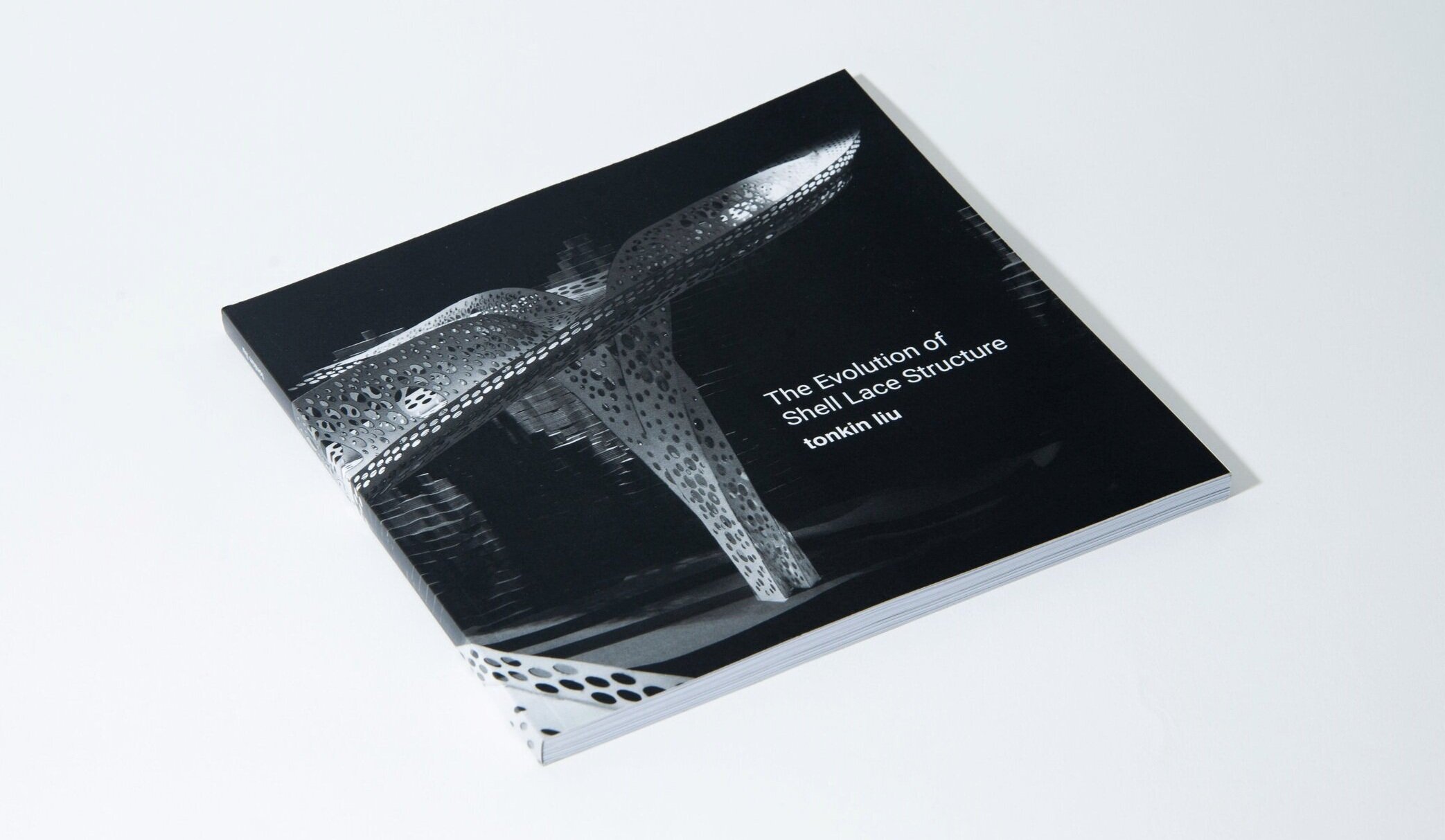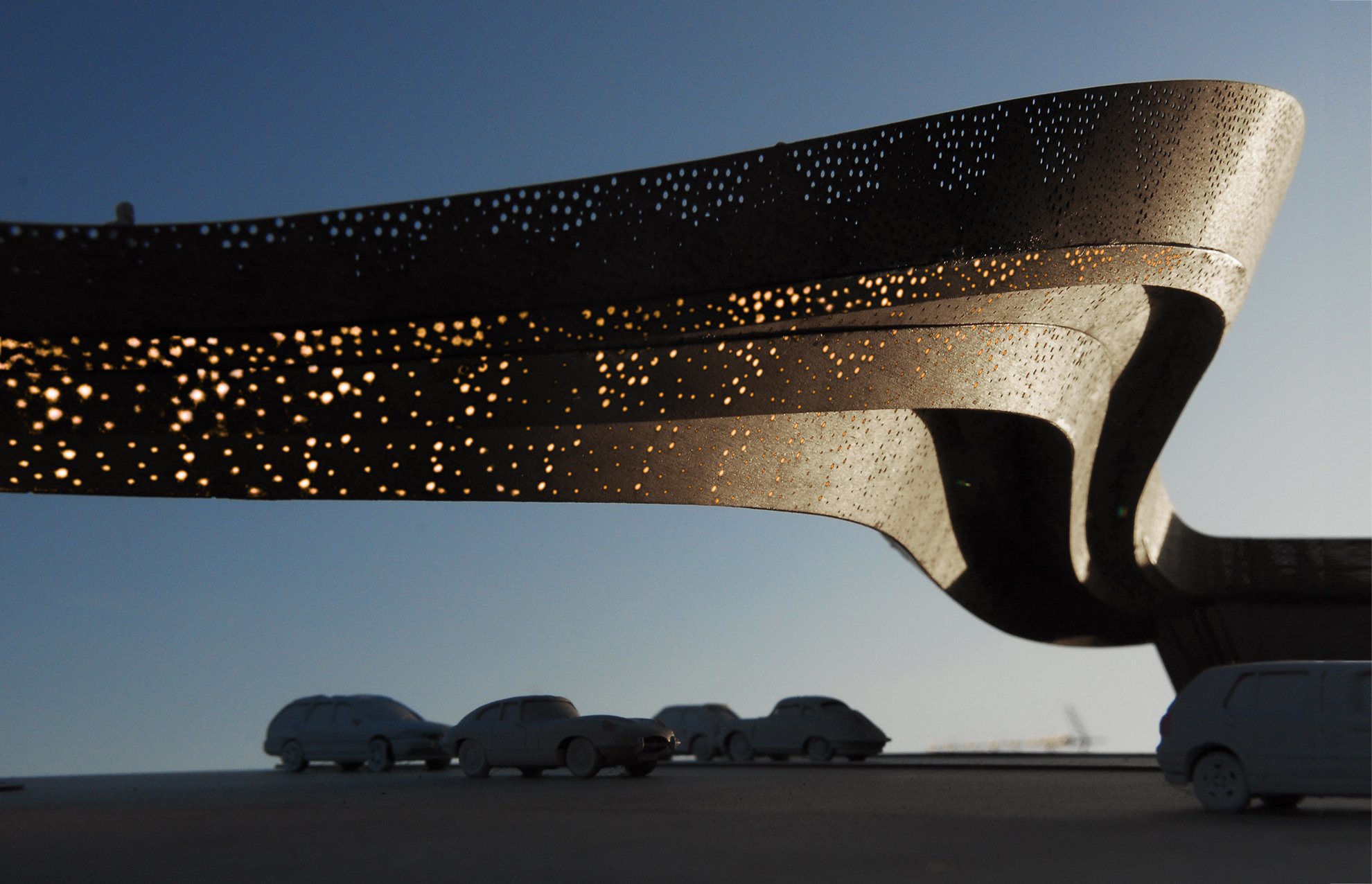shell lace structure
RIBA Research Trust Grant 2013
RIBA President’s Awards for Research Finalist 2014
RIBA Exhibition 2014
Featured in Biomimicry in Architecture by Michael Pawlyn, 2012 and 2016
Featured in Prototyping Architecture International Conference and Publication, 21-23 March 2013
Shell Lace Structure is a unique technology using biomimicry to abstract principles from natural structures, specifically mollusc shells. Below are some of the projects that have involved the application of the technique, the result of thirteen years of intense practice-based research in collaboration with engineers at Arup and scientists at the Natural History Museum.
Seaside Shelter, Bexhill-on-sea
Solar Lace Bridge, Lisbon
Tailor’s Window, London
Island of Light, Kaohsiung
Shi Ling Bridge, Yunnan
Rain Bow Gate, Burnley
Baku Star, Baku
Disaster Relief Shelter, Global
Cadogan Cafe, London
Bluewater Shopping Centre, Kent
Salford Meadows Bridge, Salford
Service Station, The Gulf
Steel Prototype, RIBA Exhibition
Sugar Cane, Guadalupe
Solar Gate, Hull
Oval Court, London
Shell Lace Stent, medical device
Tower of Light, Manchester
Tower of Light is a 40-metre tall tower supporting and enclosing flues for a new low-carbon energy centre in Manchester's City Centre. Completed, 2022.
The Evolution of Shell Lace Structure, published in 2014, expands on the topic and is available to purchase here.
Sea shells gain strength from curvilinear geometry, growing in thin layers over a long period of time, growing only where they need to. As flamboyant and daring as gothic vaults, which rely upon mass for their compressive strength, shells nevertheless demonstrate optimum structural principles. Lessons from tailoring demonstrate how pattern cutting thin flat sheet material can creates stiff three-dimensional form. Curvatures, together with corrugations, lock in the stiffness. Perforations minimise weight by removing material where the structure requires less strength, bringing the added delight of visual connection and refinement of scale and lightness.
Similar to the ways seashells gain their strength from optimised curvilinear geometry, Shell Lace Structure takes advantage of these forms to provide added stiffness as a result of corrugations. The lightweight quality of the structure itself is made possible by strategically placed perforations. The technique for the construction has been developed through research and experimentation with digital modelling, analysis, and fabrication tools. In a design process that is simultaneously intuitive, analytical, and iterative, researchers developed three-dimensional geometries built up virtually from “conjoined developable surfaces.” these surfaces are then “unzipped at the seams, unrolled, and nested” making it possible to cut them from flat material in sheets with the aid of computers. These cut profiles are then reassembled to produce the final three-dimensional form.
The Shell Lace Structure technique was discovered by Tonkin Liu in 2009 through empirical experimentation that combined knowledge of mollusc shell geometries with the traditional craft of tailoring.
In conjunction with empirical lessons, digital design and fabrication tools make possible a variety of structural types. These active surface structures bring together the conventional engineering fields of shell design and folded plate structures to create strong, ultra-light, free organic forms.
The development of the novel technique was carried out through a series of architectural competitions, resulting in several wins and built structures prior to the tower of light. In 2014, an RIBA research grant was awarded to Shell Lace Structure, and an exhibition held at the RIBA headquarters with an accompanying catalogue, The Evolution of Shell Lace Structure.
Shell Lace Tree demonstrated in Austin Reed’s window is a 1 to 5 model with self-supporting columns and vaults, made entirely out of 1.5mm thick card. Regent’s Street, 2010.
Shell Lace Stent is a tracheal stent, which are commonly used to support transplants of the trachea and to treat collapsed airways in instances of throat cancer, trauma, and for the elderly. Patented, 2021.
Solar Gate is a sundial that uses solar alignment to mark significant times and dates in Hull. Completed, 2017.
Shi Ling Bridge is lightweight bridge spans 75 metres using a single sheet material of 15mm thickness.
Baku Star is a sculptural landmark design concept in Azerbaijan. Hollow torsion beams cantilever 20m, made from 20mm steel plate.
Meadow bBridge amplifies the characteristics of its site, and embraces the metaphor of growth.
Island of Light is a ferry terminal in Taiwan perched on the waterfront, accommodates the entire port and cruise centre.
The Solar Lace Bridge is a minimal structure that expands as it crosses the motorway, collecting the sun’s energy and creating a public place. The single surface structure is 8mm thick perforate corten steel, spanning 40 metres.
Oval Court is Tonkin Liu’s competition-winning design to infill the courtyard of the Grade-II listed Lansdowne House with a light and delicate perforated canopy and a retractable double glazed roof.


















